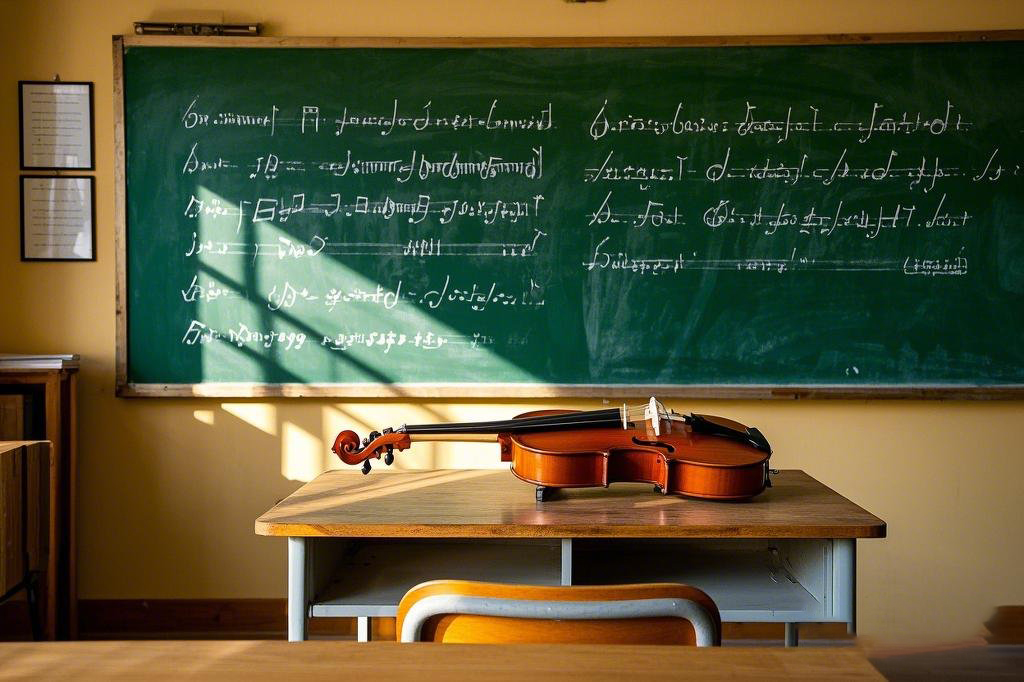Read violin sheet music
Shang Kun 2025-08-03 104
Learning to read violin sheet music is like unlocking a secret language that allows you to communicate with great composers across centuries. Imagine holding a violin in your hands, bow poised, ready to bring music to life. You've practiced for hours, but something always feels off. The notes seem to blur, and the rhythm feels disjointed. Sound familiar? If you've ever struggled to make sense of those black and white symbols on the page, you're not alone. Reading violin sheet music can be a challenging yet incredibly rewarding skill to master.
Why Is Reading Violin Sheet Music So Tricky?Think about the last time you sat down to practice. You open your music book, and there it is—page after page of hieroglyphics. The challenge lies in deciphering the language of music, which requires not just technical skill but also emotional understanding. Many violinists get overwhelmed by the sheer amount of information presented on the page: notes, rhythms, dynamics, and more. It's like trying to juggle a handful of tasks while keeping time with an unseen metronome.
But here's the thing: reading music isn't just about recognizing notes; it's about translating those symbols into sound with precision and emotion. Without a solid understanding of sheet music, even the most talented violinists can struggle to bring a piece to life. It's not just about playing the right notes; it's about conveying the story behind the music.
Cracking the Code: How to Read Violin Sheet Music Like a ProSo, how do you tackle this complex task? The key is to break it down into manageable parts. Start by focusing on the basics: the staff, notes, and rests. The staff is made up of five horizontal lines and four spaces, each representing a different pitch. Notes are the symbols that tell you which notes to play, and rests are the spaces between notes.
Once you've got the basics down, it's time to move on to rhythm. Rhythm is the backbone of music, and understanding it will help you keep time and play with confidence. Pay attention to the time signature at the beginning of the piece, as it tells you how many beats are in each measure and which note gets the beat.

Dynamic markings are another important element. These symbols tell you how loud or soft to play a note. From piano (soft) to forte (loud), dynamics add emotion and depth to your playing. Don't overlook these details—they can make a world of difference in how your music is received.
Finally, don't forget about bow control. The way you hold and move your bow can drastically affect the sound of your violin. Practice maintaining a consistent bow speed and pressure, and pay attention to the articulation marks, such as slurs and staccatos, which dictate how notes should be connected or separated.
Practice Makes PerfectLike any skill, reading violin sheet music requires practice. Set aside time each day to work on your reading skills, even if it's just 15 minutes. Start with simple pieces and gradually work your way up to more complex works. The more you practice, the more comfortable you'll become with the notation.
One effective way to improve is to use sheet music with large, clear notation, especially if you're just starting out. This makes it easier to focus on the individual elements without getting overwhelmed. As you progress, you can move on to sheet music with smaller notation, which is more commonly used in professional settings.
Another helpful tip is to use a metronome. This device will help you keep time and ensure that you're playing at the correct tempo. Start slowly and gradually increase the speed as you become more comfortable with the piece.
Making It Music to Your EarsReading violin sheet music is more than just a technical skill—it's an art form. It requires patience, practice, and a deep love of music. Remember, even the most accomplished violinists started somewhere, and they too had to learn how to read sheet music.
So, the next time you sit down to practice, approach your sheet music with curiosity and determination. Break it down into manageable parts, and don't be afraid to ask for help if you're struggling with a particular section. With time and effort, you'll soon find yourself lost in the beauty of the music, playing with confidence and emotion.
Ready to take your violin playing to the next level? Consider taking lessons from a professional violin teacher like Shang Kun, who offers one-on-one instruction both online and offline. Whether you're a beginner or an advanced player, Shang Kun can help you master the art of reading sheet music and bring your musical vision to life.
